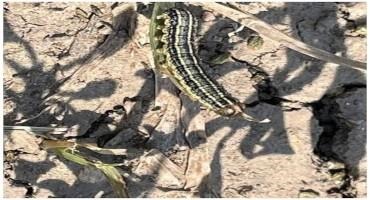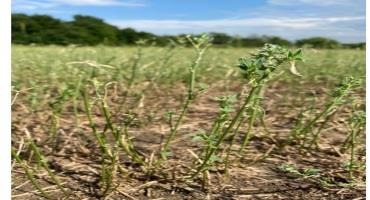Figure 1: Fall armyworm. Photo credit: K-State Entomology

Figure 2: Armyworm. Photo credit: K-State Entomology

Figure 3: Alfalfa caterpillar. Photo credit: K-State Entomology

Figure 4: Alfalfa field after an intense worm defoliation. Photo by Bruno Pedreira, K-State Research and Extension.
Alfalfa caterpillars are usually quite common in alfalfa and soybeans, however, not at the densities detected this year. Alfalfa caterpillars pupate then emerge as the common yellow (Figure 5) or white butterflies usually seen flying around alfalfa and soybean fields.
Regardless of which larval species, it is apparent that the majority of the larvae are relatively mature and thus will be/or are pupating soon. Pupation will probably take 4-5 days, then the adults will emerge, mate, and start depositing eggs. These eggs will hatch and then in 4-7 days the new, but very small, larvae will start the feeding process all over again. Armyworms will attack mainly grasses, i.e. brome, late-planted sorghum, wheat, etc. Alfalfa caterpillars will mostly stay in alfalfa or soybeans, before they get too mature, and fall armyworms may feed on just about any crop. However, sorghum should only be susceptible to "headworms" from flowering until soft dough.
All three species may have at least one more generation, if not more, until a hard freeze puts a stop to them. The most important point is to keep scouting your field to identify their presence before significant damage, thus avoiding large yield losses.

Figure 5: Adult alfalfa caterpillar. Photo credit: K-State Entomology
Source : ksu.edu